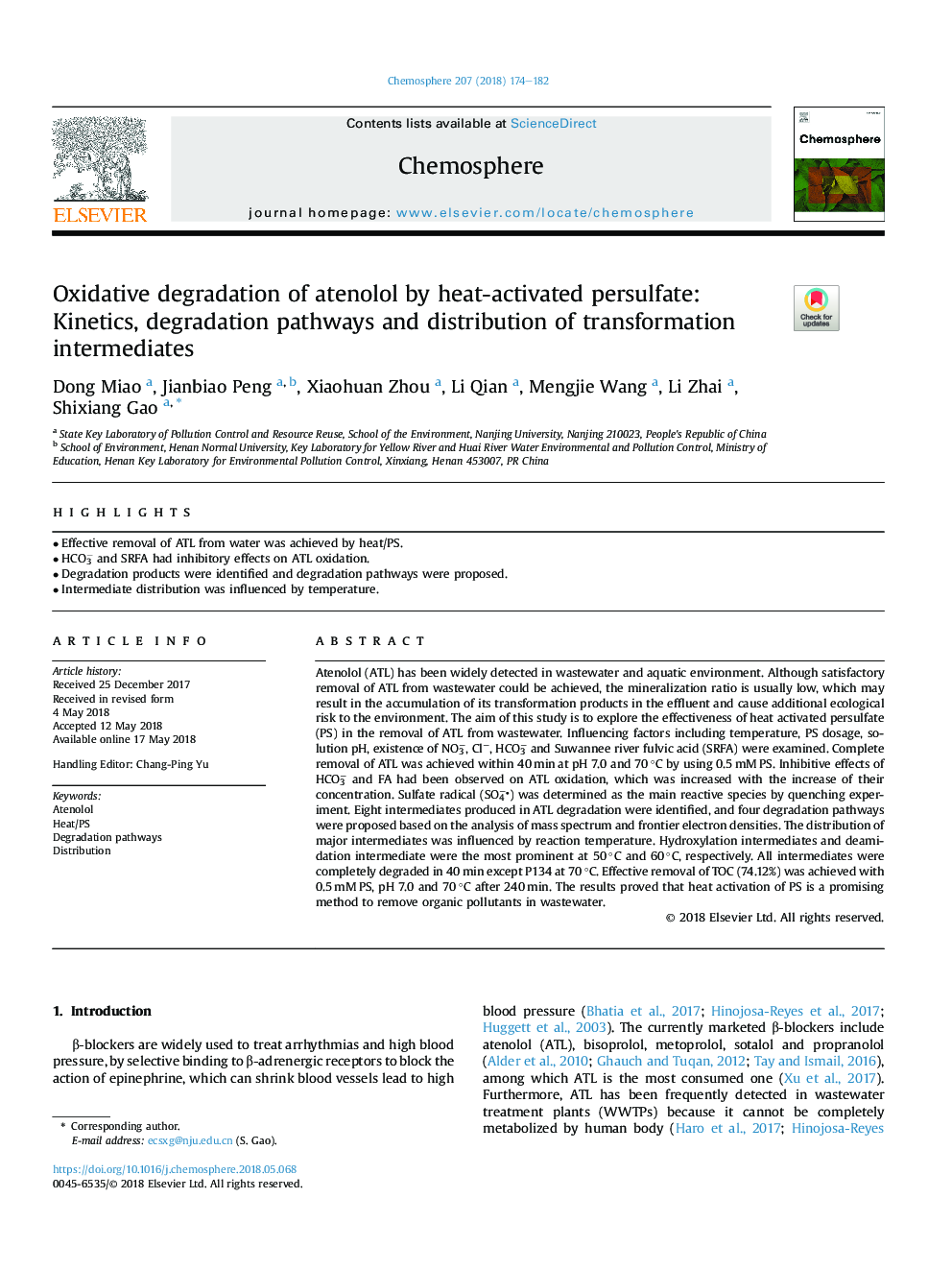| Article ID | Journal | Published Year | Pages | File Type |
|---|---|---|---|---|
| 8850947 | Chemosphere | 2018 | 9 Pages |
Abstract
Atenolol (ATL) has been widely detected in wastewater and aquatic environment. Although satisfactory removal of ATL from wastewater could be achieved, the mineralization ratio is usually low, which may result in the accumulation of its transformation products in the effluent and cause additional ecological risk to the environment. The aim of this study is to explore the effectiveness of heat activated persulfate (PS) in the removal of ATL from wastewater. Influencing factors including temperature, PS dosage, solution pH, existence of NO3â, Clâ, HCO3â and Suwannee river fulvic acid (SRFA) were examined. Complete removal of ATL was achieved within 40â¯minâ¯at pH 7.0 and 70â¯Â°C by using 0.5â¯mMâ¯PS. Inhibitive effects of HCO3â and FA had been observed on ATL oxidation, which was increased with the increase of their concentration. Sulfate radical (SO4â) was determined as the main reactive species by quenching experiment. Eight intermediates produced in ATL degradation were identified, and four degradation pathways were proposed based on the analysis of mass spectrum and frontier electron densities. The distribution of major intermediates was influenced by reaction temperature. Hydroxylation intermediates and deamidation intermediate were the most prominent at 50â¯Â°C and 60â¯Â°C, respectively. All intermediates were completely degraded in 40â¯min except P134 at 70â¯Â°C. Effective removal of TOC (74.12%) was achieved with 0.5â¯mMâ¯PS, pH 7.0 and 70â¯Â°C after 240â¯min. The results proved that heat activation of PS is a promising method to remove organic pollutants in wastewater.
Related Topics
Life Sciences
Environmental Science
Environmental Chemistry
Authors
Dong Miao, Jianbiao Peng, Xiaohuan Zhou, Li Qian, Mengjie Wang, Li Zhai, Shixiang Gao,
